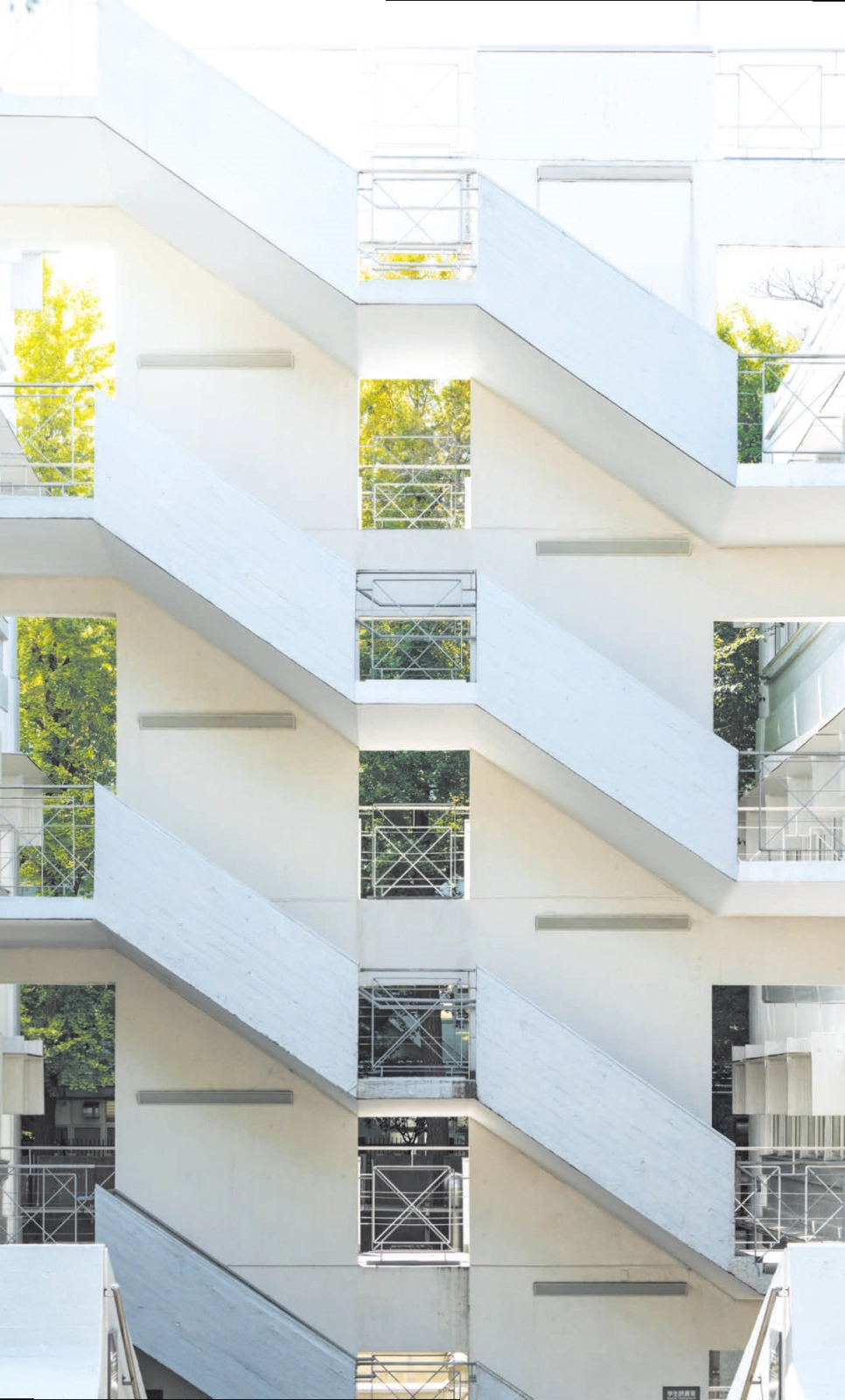You can take lectures from world-renowned professors, as well as corporate leaders and prominent people from Japan and abroad.
ISHIDA, Rintaro
Department of Materials Science
Master Course 1 year
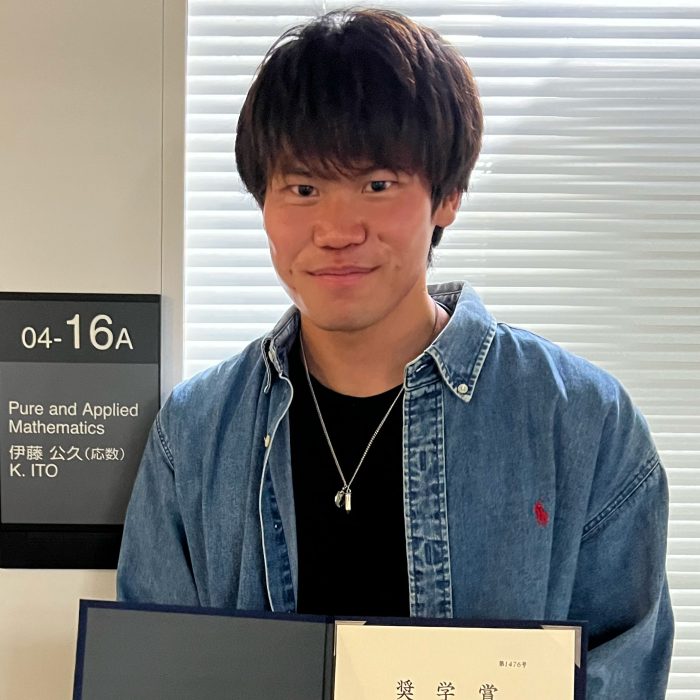
Please tell us why you chose your major?
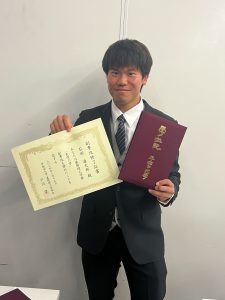 Since childhood, I have enjoyed connecting everyday life with mathematics, viewing various aspects such as money, time, length, and weight as treasures of learning. I believe this early interest immersed me in the world of mathematics. Upon entering university, I aimed to conduct research that would contribute to society using mathematics, so I enrolled in the Applied Mathematics Department. There, I acquired foundational theories and techniques such as mathematical modeling, optimization, and statistical analysis, enabling me to propose solutions to real-world challenges. In my fourth year, upon joining Professor Ito’s lab, I developed a deeper interest in the strength of Japanese sword metals, sparking my fascination with materials science. Therefore, for graduate school, I pursued a major in Materials Science to explore physical and engineering perspectives from a mathematical standpoint.
Since childhood, I have enjoyed connecting everyday life with mathematics, viewing various aspects such as money, time, length, and weight as treasures of learning. I believe this early interest immersed me in the world of mathematics. Upon entering university, I aimed to conduct research that would contribute to society using mathematics, so I enrolled in the Applied Mathematics Department. There, I acquired foundational theories and techniques such as mathematical modeling, optimization, and statistical analysis, enabling me to propose solutions to real-world challenges. In my fourth year, upon joining Professor Ito’s lab, I developed a deeper interest in the strength of Japanese sword metals, sparking my fascination with materials science. Therefore, for graduate school, I pursued a major in Materials Science to explore physical and engineering perspectives from a mathematical standpoint.
Please tell us about the research you are currently working on.
During my undergraduate years, I conducted research titled “Comparative Study of Japanese Swords and Western Swords,” focusing on the differences in strength based on the methods of sword-making. Japanese swords are generally praised for being “unbreakable, unbendable, and sharp.” However, I discovered a contradiction in this reputation. To prevent breakage, the sword must be made from soft iron, whereas to avoid bending and achieve sharpness, it requires hard iron. Japanese swords resolve this paradox by using both types of iron: one that breaks easily and another that resists breaking. Furthermore, I found that the sword-making process for Japanese swords involves complex heat treatments such as folding, tempering, and differential hardening, which alter the strength of iron. Strength in this context involves both hardness, which signifies sharpness, and toughness, which represents the flexibility, durability, and brittleness of the sword. Therefore, I became interested in how the microstructure of iron changes due to different heat treatments and focused on the toughness of metals. Starting from graduate school, my research theme has been “Toughness of Japanese Swords,” aiming to explore these aspects further.
Please tell us about the attractions of the research.
Meeting Professor Ito sparked my fascination with Japanese swords. With a history spanning over 1000 years, Japanese swords are renowned for their craftsmanship, particularly in replicating blades from the Kamakura period—a feat considered beyond modern scientific technology. Researchers of Japanese swords dedicate themselves daily to unraveling such mysteries. Variations in tamahagane steel types, heating and forging conditions, carbon content before tempering, and heating temperatures during tempering can profoundly alter the characteristics of Japanese swords. Each sword reveals a unique personality depending on the artisan’s touch, showcasing countless expressions. These qualities epitomize, for me, the unparalleled allure of Japanese swords.
Is there anything you are passionate about except for academics during your student life?
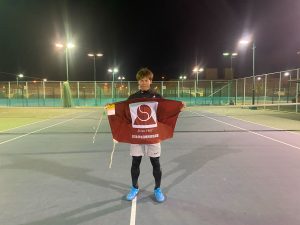 As you can see, I look like I belong to a sports club type, right? lol I have been actively involved in the Waseda University Tennis Club, participating in practices and tournaments. In individual competitions, I achieved my ultimate goal by winning the singles championship at the National Student Tennis Federation’s national tournament. Furthermore, I was honored to serve as captain of Waseda University’s team for two consecutive years, contributing to our 27-time victory streak in intercollegiate competitions. Additionally, I gained valuable experience as a representative player for the Kanto region in the East-West competition. Engaging in club activities, I faced various challenges, but through effective communication with my teammates, we tackled many issues together. These experiences taught me the importance of perseverance in difficult situations and the value of building trust through shared goals and perspectives with team members, which I consider invaluable lessons for life.
As you can see, I look like I belong to a sports club type, right? lol I have been actively involved in the Waseda University Tennis Club, participating in practices and tournaments. In individual competitions, I achieved my ultimate goal by winning the singles championship at the National Student Tennis Federation’s national tournament. Furthermore, I was honored to serve as captain of Waseda University’s team for two consecutive years, contributing to our 27-time victory streak in intercollegiate competitions. Additionally, I gained valuable experience as a representative player for the Kanto region in the East-West competition. Engaging in club activities, I faced various challenges, but through effective communication with my teammates, we tackled many issues together. These experiences taught me the importance of perseverance in difficult situations and the value of building trust through shared goals and perspectives with team members, which I consider invaluable lessons for life.
Please tell us about your future path and goals.
I want to leverage the knowledge I gained during my student days to work in the steel industry, which supports the foundations of society. I am particularly drawn to efforts towards achieving carbon neutrality, which have become goals worldwide in recent years. With this in mind, I hope to contribute, even if in a small way, to technological innovations that build a sustainable future. My future goal is to engage in cutting-edge environmental technology and sustainable product development, contributing to paving the way towards carbon neutrality.
Please give a message to underclassmen and preparatory students.
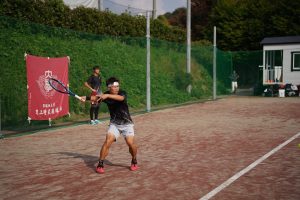 Waseda University offers the ideal environment to study beyond one’s own discipline, allowing students to explore various fields and acquire a broad range of knowledge. Within the FSE, students have the opportunity to learn from globally renowned professors and receive lectures from leaders of domestic and international companies, as well as prominent figures. During your university years, I encourage you to not only focus on academics but also explore passions such as sports or music. You might discover something unexpected! lol Cherish the encounters with diverse people and enjoy your student life to the fullest.
Waseda University offers the ideal environment to study beyond one’s own discipline, allowing students to explore various fields and acquire a broad range of knowledge. Within the FSE, students have the opportunity to learn from globally renowned professors and receive lectures from leaders of domestic and international companies, as well as prominent figures. During your university years, I encourage you to not only focus on academics but also explore passions such as sports or music. You might discover something unexpected! lol Cherish the encounters with diverse people and enjoy your student life to the fullest.


